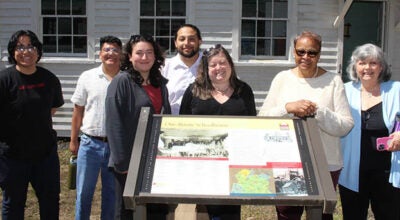Hearings set for school, zoning
Published 8:32 am Friday, May 4, 2018
Two public hearings on May 14 will look at the potential for expanding a day and residential school program and revising a zoning ordinance for Article 9 of the Buckingham County Zoning Ordinance, which discusses radio, television and wireless communication towers.
The hearings will begin during the Buckingham County Board of Supervisor meeting at 7 p.m. at the county administration building at 13380 W. James Anderson Highway.
The hearing for Virginia Keys School will concern a renovation and expansion of the school onto a nearby 2.5-acre property. The property is located on 2010 High Rock Road and is currently zoned as Agricultural-1, a public notice for the upcoming meeting cited.
Bill Lay, director of community outreach with Virginia Keys School, which offers training for trades for students who are in the foster care system, addressed the board during its April 16 meeting about a special use permit to renovate a property, which has fallen into disrepair. Lay said school representatives would “utilize the house for bedrooms and two office spaces.” He also noted refurbishing the garage area to be used for a business space.
He said the renovated space would be used for short-term emergencies, including for children who are removed from their homes.
Lay spoke about a recent program installed in Virginia that allows foster students to remain in the system after their 18th birthdays with assistance to help the students reach independent living, job placement and continuing education.
Lay, during the meeting, said the expansion would allow for three additional jobs. “We’re running a very successful business out there, and we’re helping young people, once they transition away from our program, they do not re-enter Social Service. They are able to stay independent, on their own, which is a great benefit for the Commonwealth and for our communities,” Lay said.
The hearing for the zoning ordinance revision will include creating a supplemental document that lines out all requirements for telecommunication facilities, including reducing collocation fees and language for small cell facilities.
The revised ordinance defines collocation as “The practice of installing, mounting, maintaining, modifying, operating or replacing a wireless facility on, under, within, or adjacent to a base station, building, existing structure, utility pole or wireless support structure.”
The proposed ordinance would reduce the collocation fee, a measure that consulting company CityScape Consultants, Inc., based in Boca Raton, Florida, agreed to, Planning and Zoning Administrator Rebecca Cobb said. CityScape has also reviewed the proposed revised ordinance.
“The fees were originally $4,000 for new tower applications and $4,000 for collocation and equipment change applications,” Cobb said Wednesday. “The proposal is for the fees to be $4,000 for new tower applications and $1,800 for collocation and equipment change applications.”
A small cell facility, according to documentation provided by Planning and Zoning Administrator Rebecca Cobb, is “a wireless facility that meets both of the following qualifications: (i) each antenna is located inside an enclosure of no more than six cubic feet in volume, or, in the case of an antenna that has exposed elements, the antenna and all of its exposed elements could fit within an imaginary enclosure of no more than six cubic feet and (ii) all other wireless equipment associated with the facility has a cumulative volume of no more than 28 cubic feet, or such higher limit as is established by the (Federal Communications Commission) FCC.”
“The following types of associated equipment are not included in the calculation of equipment volume: electric meter, concealment, telecommunications demarcation boxes, backup power systems, grounding equipment, power transfer switches, cutoff switches, and vertical cable runs for the connection of power and other services,” the documentation cited.
Cobb said the small cell facilities “provide cellular and data coverage to smaller geographic areas and are currently used predominantly to supplement service.”
The proposed general development standards for small cell facilities, according to Cobb, would “be co-located when feasible as a first option on existing utility poles, County owned infrastructure (with the County’s consent), existing wireless support structures or base stations in the immediate area … may be developed as replacements for existing utility poles or wireless support structures provided the new facility does not exceed the size of the former facility.”





